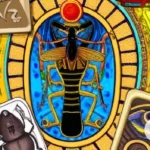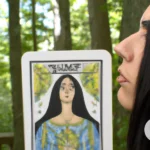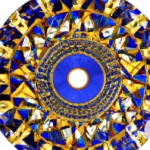The Beginnings of Tarot
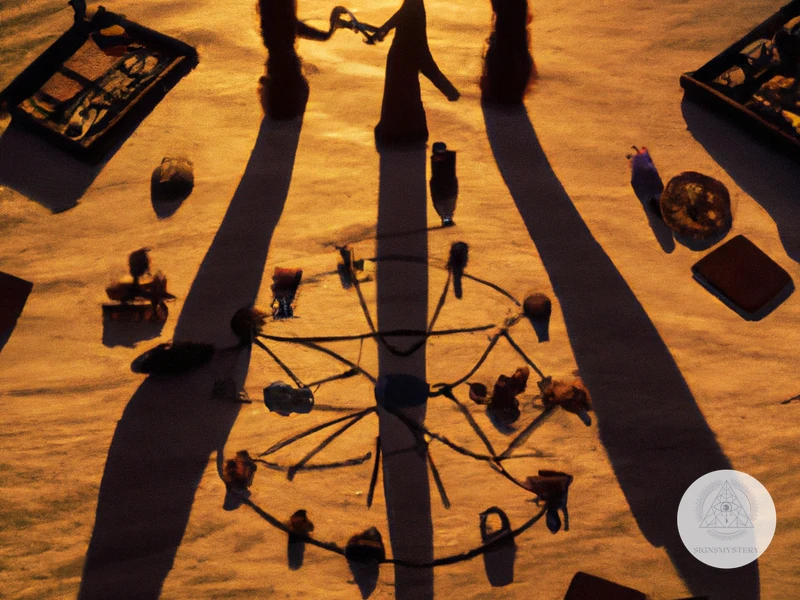
Tarot cards have a rich and fascinating history, with origins shrouded in mystery and speculation. There are many misconceptions and misunderstandings about the true origins and uses of tarot cards, but one thing is clear: the history of tarot is a complex and multifaceted one.
Some sources claim that tarot cards were first used in ancient Egypt for divination purposes, linking them to the Egyptian Book of the Dead. However, this theory has been largely debunked by historians and tarot experts alike. While there may be some vague similarities between Egyptian symbolism and tarot imagery, there is no concrete evidence to support the idea that tarot cards originated in Egypt.
Another common misconception about tarot cards is that they are associated with Satanism or other dark forces. This assumption is largely due to the negative stereotypes that have arisen around the use of tarot cards, thanks in large part to Hollywood movies and sensationalist media coverage. In reality, tarot cards are simply a tool for gaining insight into one’s own thoughts and feelings, and the vast majority of people who use them do so for spiritual or personal growth purposes.
Despite the confusion and misunderstandings surrounding tarot, it is generally accepted that the earliest known tarot decks were created in 15th-century Italy. These early decks, known as “tarocchi,” contained only 22 cards and were used for playing games rather than divination.
It wasn’t until several centuries later that tarot cards began to be used for divination purposes. This shift occurred primarily in France in the 18th century, where the first tarot decks specifically designed for divination were created. These decks included additional cards beyond the traditional 22, and featured intricate and ornate artwork.
While the true origins of tarot cards may remain shrouded in mystery, it’s clear that they have a rich and complex history. Despite negative stereotypes and misunderstandings, tarot cards have proved to be a powerful tool for personal growth and introspection for centuries.
The Use of Tarot for Divination
The art of Tarot card divination is a fascinating and complex subject that captivates many individuals to this day. While some may view it as a mere party trick, others find it to be a valuable tool for introspection and self-discovery. However, there are misconceptions and misunderstandings surrounding the history and purpose of Tarot cards that continue to persist. Despite claims of their connection to Satanic practices, the origins of Tarot cards date back to ancient Egypt, where it is believed they were used as a tool for spiritual enlightenment. In this section, we will explore the evolution of Tarot cards and the role they play in modern-day divination practices. Let us debunk some of the stereotypes surrounding Tarot cards and delve deeper into their rich history.
18th Century France
During the 18th century in France, the use of tarot cards for divination began to gain popularity. Esoteric societies, such as the Order of the Golden Dawn, began to incorporate the use of tarot into their practices, which helped to further the spread of divination through tarot.
There are different theories about the origin of tarot cards, and many misconceptions surrounding them, such as the belief that they are linked to Satanism. However, it is believed that tarot cards had their beginnings in Italy in the 15th century as a game of trumps called “tarocchi.” Over time, the cards evolved to include symbolic imagery and began to be used for divination.
However, it was in 18th century France that tarot cards gained significant attention for divination. The French occultist Jean-Baptiste Alliette, who went by the name Etteilla, created the first deck specifically designed for divination purposes. He believed that the cards held mystical and esoteric powers that could reveal information about one’s future.
Etteilla was not the only one interested in tarot during this time. Other French occultists, such as Antoine Court de Gebelin and Louis-Michel le Normand, also believed in the power of tarot for divination, and they created their own interpretations of the cards.
Despite the growing interest in tarot, there were many misunderstandings about the practice, including the notion that it was linked to witchcraft and the devil. This misconception still persists to this day, so it’s important to debunk these stereotypes and demystify the true purpose and meaning of tarot cards.
The 18th century in France marked a turning point for the use of tarot cards in divination, and paved the way for the continued evolution and popularity of tarot in the centuries that followed.
The Popularity of Tarot
During the late 1800s and early 1900s, the popularity of tarot grew rapidly, thanks in part to the efforts of occult societies like the Hermetic Order of the Golden Dawn. However, the appeal of divination with tarot cards was not limited to esoteric groups, and many everyday people began to turn to tarot for guidance and insight. The use of tarot for fortune-telling and divination began to be seen as mainstream, and tarot cards were widely available for purchase in bookstores and gift shops.
Unsurprisingly, with this newfound popularity came a fair share of misconceptions and misunderstandings about tarot cards and their use. Some saw them as tools of the devil, equating the images on the cards with Satanic symbols, while others believed that they were only used by charlatans to scam naive and vulnerable individuals. These misconceptions continue to persist today, despite efforts from the tarot community to debunk them.
However, the popularity of tarot shows no signs of waning, and the cards have cemented their place in popular culture. Tarot imagery and symbolism have been incorporated into everything from fashion and art to movies and TV shows, further cementing their status as a cultural touchstone.
It’s important to recognize that the appeal of tarot goes beyond its use as a tool for divination. For many, the cards serve as a means of self-exploration and personal growth. The archetypes and symbolism depicted on the cards can help individuals to gain insight into their own psyche and the world around them. Additionally, many people find that the act of shuffling and laying out the cards can be a meditative and centering experience.
The history of tarot cards being used for divination is complex and multi-layered, filled with both misconceptions and genuine insights. However, one thing is clear: the continued popularity of tarot speaks to a universal human desire for guidance and understanding, and the cards remain a powerful tool for those seeking to tap into their own intuition and inner wisdom.
To learn more about the misconceptions surrounding tarot and its origins, check out this article.
Tarot Cards in the 20th Century
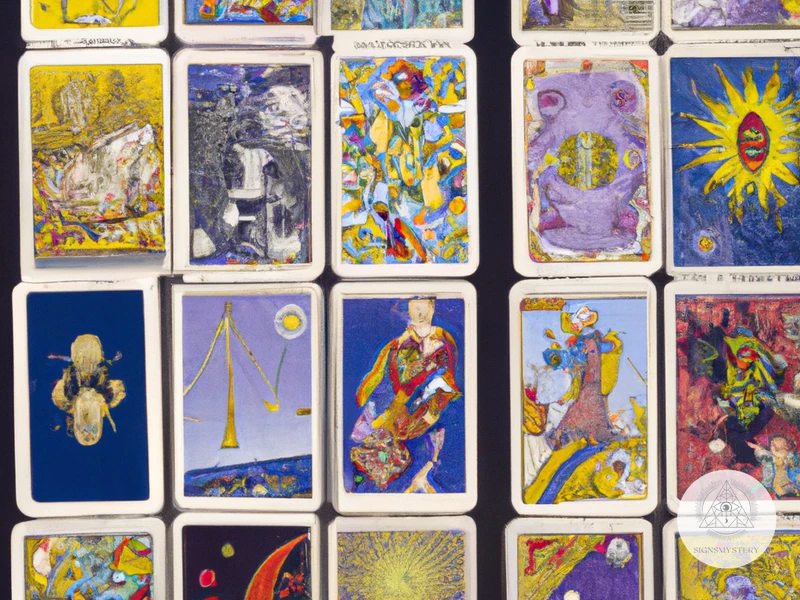
The 20th century saw a surge in interest and usage of tarot cards, particularly in Western culture. Many people associate tarot cards with fortune-telling or divination, but their use extends far beyond these misconceptions. In fact, the origins of tarot cards are steeped in mythology, as some believe they can be traced back to ancient Egypt. However, this popular misconception has been debunked by scholars who have traced the history of tarot back to medieval Europe. Despite the debunking of certain myths and stereotypes, tarot continues to be a widely misunderstood and often stigmatized practice, with some individuals erroneously associating it with Satanism. However, it is important to separate fact from fiction and explore the true role of tarot in modern society.
The Hermetic Order of the Golden Dawn
During the late 19th and early 20th centuries, the Hermetic Order of the Golden Dawn emerged as a prominent mystical organization that heavily incorporated the use of tarot cards in its practices. Established in London in the 1880s, the Order aimed to train its members in the arts of divination, alchemy, and magic. One of the Order’s founders, Samuel Liddell MacGregor Mathers, claimed to have received a set of tarot cards from a secret society in France, which he used as a basis for the Order’s teachings.
The Golden Dawn’s use of tarot was heavily influenced by the Hermetic Qabalah, a system of Jewish mysticism that assigns esoteric meanings to the letters and numbers of the Hebrew alphabet. Members of the Order believed that the tarot represented the journey of the individual soul through the different spheres, or sephiroth, of the Qabalistic Tree of Life. Each card was associated with a specific sphere, and the Golden Dawn’s teachings on the tarot emphasized the similarities between the different cards and the spiritual concepts they represented.
The Golden Dawn also developed its own unique system of tarot symbolism, which became known as the Golden Dawn Tarot or the Waite-Smith Tarot (after two of its members, Arthur Edward Waite and Pamela Colman Smith, who designed a tarot deck based on the Order’s teachings). This deck featured detailed illustrations on each card, which the Golden Dawn believed would help students better understand the complex symbolism of the tarot.
However, the Golden Dawn’s use of tarot was not without controversy. Some critics accused the Order of promoting Satanism and black magic, and many believed that its teachings on the tarot and other mystical practices were highly secretive and occult in nature. In reality, the Golden Dawn’s emphasis on tarot was focused primarily on personal growth and spiritual development, rather than any sort of dark or malevolent purpose.
Despite its controversy, the influence of the Hermetic Order of the Golden Dawn on tarot practice cannot be overstated. Its system of symbolism and interpretation has had a lasting impact on tarot readers and enthusiasts to this day.
Source link: /debunk-tarot-stereotype/
The Rider-Waite-Smith Deck
One of the most popular and widely recognized tarot decks today is the Rider-Waite-Smith (RWS) deck. This deck was first published in 1909, in London, by the Rider Company.
The RWS deck was created by artist Pamela Colman Smith and Arthur Edward Waite, a member of the Hermetic Order of the Golden Dawn. The deck has 78 cards, with each card containing intricate and detailed imagery. The imagery on the cards was specifically chosen to correspond with various esoteric and spiritual concepts, including astrology, numerology, and the Kabbalah.
The Major Arcana cards in the RWS deck contain a variety of well-known and recognizable images, including The Fool, The Magician, and The High Priestess. These cards have become staples in modern tarot practice and are often the first cards beginners learn.
The Minor Arcana cards in the RWS deck are divided into four suits: Wands, Cups, Swords, and Pentacles. Each suit contains cards numbered Ace through Ten, as well as four Court Cards: Page, Knight, Queen, and King. The Minor Arcana cards in the RWS deck also contain rich and meaningful symbolism, making them powerful tools for divination and self-reflection.
The RWS deck has had a significant impact on the world of tarot, influencing the designs of countless other decks. Its popularity can be attributed, in part, to the fact that the imagery on the cards is easy to understand and interpret, making them accessible to beginners.
It is important to note, however, that the RWS deck is just one of many tarot decks available today. Each deck has its own unique style and symbolism, and it is up to the individual practitioner to choose the deck that resonates with them the most.
Link: In debunking the myth that tarot cards have Egyptian origins, it is important to understand the true history and origins of tarot. Read more about it here.
Tarot and Pop Culture
Tarot has been featured in various works of popular culture, from literature to movies and television shows. In many cases, the portrayal of Tarot has been inaccurate or sensationalized, perpetuating misconceptions about the nature of the cards and their use in divination. Despite this, Tarot has also been used in thought-provoking and insightful ways in popular culture.
1. Literature
Tarot has been featured prominently in literature for centuries, from the Gothic novels of the 18th and 19th centuries to contemporary works of fantasy and magical realism. In many cases, Tarot has been used as a symbol or metaphor for different aspects of human experience, such as fate, destiny, and the unknown. One notable example is the book “The Name of the Rose” by
Subscribe to Our Newsletter
Sign up to receive the latest news and updates.
2. Movies and Television
Tarot has also been featured in movies and television shows, often as a means of portraying mysticism, magic, or the supernatural. In some cases, the portrayal of Tarot has been negative, perpetuating stereotypes about witchcraft or Satanic rituals. One example is the horror movie “The Exorcist,” in which Tarot cards are used to suggest the presence of demonic forces. However, Tarot has also been used in thought-provoking and insightful ways in popular culture. For instance, the character of Laura Palmer in David Lynch’s “Twin Peaks” is associated with the mysterious and powerful “Judgment” card.
3. Music
Tarot has also had an impact on the world of music, with many musicians incorporating Tarot imagery and symbolism into their lyrics and album artwork. For example, the song “The Tower” by Kate Bush is based on the Tarot card of the same name, exploring themes of upheaval and sudden change. Similarly, the album “The Wild Hunt” by Swedish folk musician The Tallest Man on Earth features Tarot imagery on its cover and throughout its lyrics.
Despite its pervasive presence in popular culture, Tarot remains misunderstood by many. For example, some people believe that Tarot is associated with Satanism or other forms of black magic, when in reality its origins are rooted in spiritual and intellectual traditions. To learn more about this and other misconceptions about Tarot, check out our article on /misconception-tarot-satanism/.
The Role of Tarot in the Modern Era
As society continues to evolve and become more accepting of alternative forms of spirituality and divination, the role of tarot has become more prevalent than ever in the modern era. With its rich history dating back centuries, the practice of using tarot cards for divination has survived the test of time and has been adopted by many as a valuable tool for self-exploration, personal growth, and even entertainment. Let’s take a closer look at the various ways tarot is being used in today’s world.
Contemporary Tarot Practice
Tarot has come a long way since its humble beginnings as a card game in Italy in the 15th century. Today, tarot is more popular than ever, with a growing number of people turning to the cards as a tool for self-discovery, spiritual guidance, and divination. In this section, we will explore some of the ways that tarot is used in contemporary practice.
Contemporary Tarot practice encompasses a wide range of approaches to tarot reading and interpretation. Some practitioners adhere to traditional methods, while others draw on their own intuition and personal experience to create new forms of divination. The table below highlights some of the key trends and techniques in modern tarot practice.
| Technique | Description |
|---|---|
| Intuitive Reading | Reading the cards based on personal intuition and insight, rather than relying solely on established meanings and interpretations. |
| Journaling | Recording insights, impressions, and observations after each reading in a journal, allowing for deeper reflection and analysis over time. |
| Mediation | Using the cards as a focal point for meditation or visualization, allowing for deeper insight into personal issues and questions. |
| Collaborative Reading | Working with a partner or group to interpret the cards, allowing for a wider range of perspectives and insights. |
| Astrological Correspondences | Using astrology to inform card meanings and interpretations, based on the zodiac signs and planets associated with each card. |
| Symbolic Associations | Drawing on personal or cultural associations with symbols and archetypes to interpret the cards, allowing for a more intuitive and personalized approach. |
Some tarot practitioners also use the cards in conjunction with other divinatory tools or spiritual practices, such as astrology, numerology, crystal healing, or meditation. These practices can further enhance the insights and guidance provided by the cards, and deepen the practitioner’s understanding of themselves and the world around them.
Ultimately, the beauty of contemporary tarot practice lies in its diversity and flexibility. There is no one “right” way to read the cards, and practitioners are encouraged to experiment with different techniques and styles to find what works best for them. Whether used for divination, personal growth, or spiritual exploration, the tarot continues to offer a powerful and transformative tool for those who seek it out.
Tarot as a Tool for Self-Exploration and Personal Growth
Tarot cards have come to gain widespread acceptance as a tool for self-exploration and personal growth. Many individuals have turned to tarot to gain deeper insights into themselves and their lives, seeking guidance about everything from career choices to romantic relationships.
Through tarot readings, individuals can gain a better understanding of their emotions, behaviors, and patterns of thought. By examining the symbolism and imagery of tarot cards, they can learn to identify hidden patterns in their lives and gain new perspectives on familiar problems.
Tarot readings can also help individuals identify personal strengths and weaknesses. By exploring the messages of the cards, they can gain insights into their own personalities and tendencies. This self-knowledge can help them make better decisions, set more appropriate goals, and approach challenges with greater confidence.
In addition to offering insights into personal growth and development, tarot readings can also be a powerful tool for coping with difficult emotions or experiences. Through working with tarot, individuals can learn to process grief, work through trauma, and find greater peace and acceptance in their lives.
Ultimately, whether used for self-discovery, healing, or simply as a tool for introspection and contemplation, tarot has proven to be a source of deep insight and inspiration for countless individuals around the world.
Closing Thoughts
The history of Tarot cards being used for divination is a rich and complex one. The origins of Tarot are shrouded in mystery, with various theories and speculations about their meaning and purpose. However, it is clear that over time, Tarot has evolved into a powerful tool for spiritual and personal growth, as well as a means of accessing the unconscious mind and exploring the depths of the human psyche.
Despite the many controversies and debates surrounding Tarot, there is no doubt that it has had a profound impact on many people’s lives. From its earliest origins in the late medieval period to its current use in contemporary spiritual practices, Tarot has proven to be a dynamic and versatile tool for divination, self-discovery, and spiritual reflection.
Today, Tarot continues to be an important part of many people’s spiritual and personal growth journeys. Whether you are seeking answers to life’s most pressing questions or simply looking to gain a better understanding of yourself and your place in the world, Tarot offers a unique and powerful perspective that can help you achieve your goals.
Of course, like any tool or practice, Tarot is not without its challenges and pitfalls. It is important to approach Tarot with an open mind and a willingness to explore the unknown. Above all, it is important to remember that Tarot is ultimately a reflection of one’s own inner world, and that the insights it provides are shaped by the individual’s beliefs, experiences, and perceptions.
Whether you are a seasoned Tarot practitioner or just beginning to explore the world of divination, there is always something new to discover and learn. By approaching Tarot with an open heart and a desire to grow and learn, you can unlock the power of this ancient and mysterious art, and discover the secrets of the universe that lie hidden within its symbols and archetypes.
Frequently Asked Questions
What is the difference between tarot and oracle cards?
Tarot cards have a set number of cards with established meanings, whereas oracle cards can have any number of cards with a more open-ended interpretation.
Can anyone read tarot cards?
Technically, anyone can read tarot cards, but it takes practice and a deep understanding of the cards’ meanings and how they can be applied in different situations.
Is tarot a form of fortune-telling?
While some people use tarot for fortune-telling, the cards are better suited for providing insight, guidance, and advice on a given situation rather than predicting the future with absolute certainty.
Do you need to have a special connection to the cards to read them effectively?
While some people believe that having a special connection to the cards can be helpful, it’s not necessary for effective readings. With practice and study, anyone can learn to read tarot cards.
Are there different types of tarot decks?
Yes, there are many different types of tarot decks, each with its own unique artwork, symbolism, and interpretation of the traditional tarot card meanings.
What is the significance of the major and minor arcana in tarot?
The major arcana cards represent major life events and spiritual lessons, while the minor arcana cards represent more everyday occurrences and influences.
Can tarot be used to address health or medical issues?
Tarot can help provide insight and guidance on health and medical issues, but it should never be used as a substitute for professional medical advice or treatment.
How can tarot be used for personal growth and self-exploration?
Tarot can help individuals gain a deeper understanding of their thoughts, emotions, and behaviors, allowing them to make positive changes and grow personally.
Is tarot a form of divination or a tool for spiritual growth?
Tarot can be used for both divination and spiritual growth, depending on the user’s intentions and beliefs.
Can tarot be used to connect with spiritual entities or energies?
Some people believe that tarot can be used to connect with spiritual entities or energies, but this should only be attempted by experienced practitioners with a deep understanding of the cards and their potential implications.



